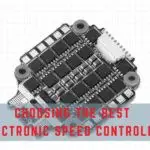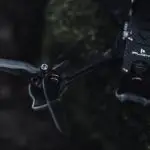Building your first FPV drone is exciting, but choosing the right motors can be a major headache. With so many options out there, it’s easy to get overwhelmed. That’s why we’ve done the research for you. In this guide, we’ll share our top picks for the best FPV motors in 2025, along with everything you need to know to make an informed decision.
Brushless vs. Brushed Motors
Brushed motors are usually utilized on micro drones and lightweight setups. It is directly powered through direct current DC due to the brushes present at its bottom half, but it does not perform well in situations where you need as much power as possible.
On the other hand, if you are building a racing drone that will demand a lot from the motor due to its weight and capacity, brushless motors may be a better option for you. It is hard to make the setup lightweight, but this is the type of motor that could provide you with the necessary power for racing quadcopters and even bigger models.
We are focusing on the brushless motor in this guide.
Note: An Electronic Speed Controller (ESC) is necessary to operate a drone with a brushless motor. Find out which is the best ESC and what are the criteria that you should look at when choosing one.
Best FPV Motors 2025
There are lots of different motors by different manufacturers out there. I’ve compiled some of the best motors to help you choose. Note that I’ve included affiliate links in the tables. If you make any purchases through my links, I will get a small commission for qualified purchases. This helps me to maintain the site without additional cost to you.
Best 5″ Racing – Lumenier 2207 2050KV Chief Racing Motor V2

Weighing only 28 g, this is one of the most powerful motor you can find for a 5” drone.
This motor is designed by Alex Campbell, better known as Chief FPV, one of the top drone racing pilots in MultiGP, Drone Racing League and Drone Champion League.
With direct input from Chief, this motor is tailored to the specific needs of competitive FPV racing. It delivers a punchy and responsive feel, allowing for precise maneuvers and quick acceleration on tight tracks.
This should be your number 1 option if you are into racing, and have the budget.
Best Budget – EMAX Eco II
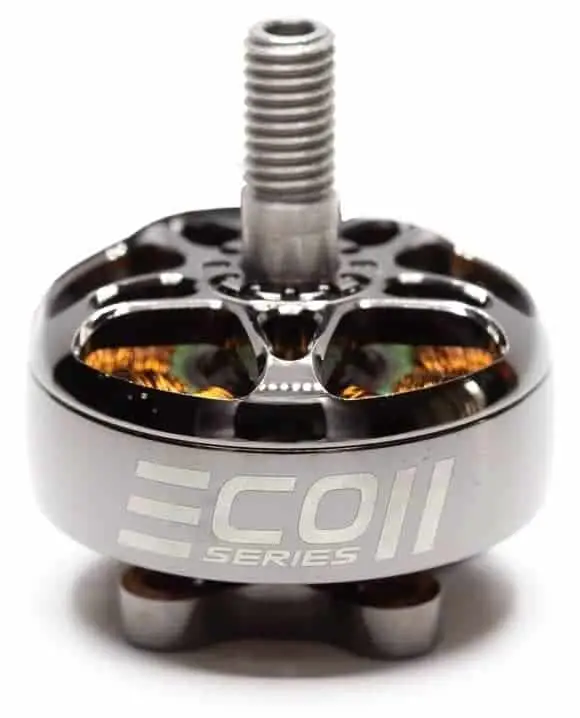
The Emax Eco series are affordable motors manufactured by Emax, a Chinese brand. Came in 3 sizes and different KV, the EMAX Eco motors generate up to 1700 g thrust, which is quite impressive for judging at the price.
If you are new in FPV racing or freestyle, you will often crash your drone. Using EMAX Eco allows you to replace the motors while keeping your budget within control.
Best Value – iFlight XING 2

XING 2 is the higher end budget motor that outcompete any other brand at this price point. If you are looking for something better than EMAX ECO II while still reasonably priced, XING 2 is your best choice.
With its enhanced responsiveness, smooth power delivery, efficient cooling and durable construction, the XING 2 is sure to become a popular choice among freestyle enthusiasts. If you’re ready to take your freestyle flying to the next level, the iFlight XING 2 is definitely worth considering.
Featherweight Powerhouse – Ummagawd Aerolight 2004
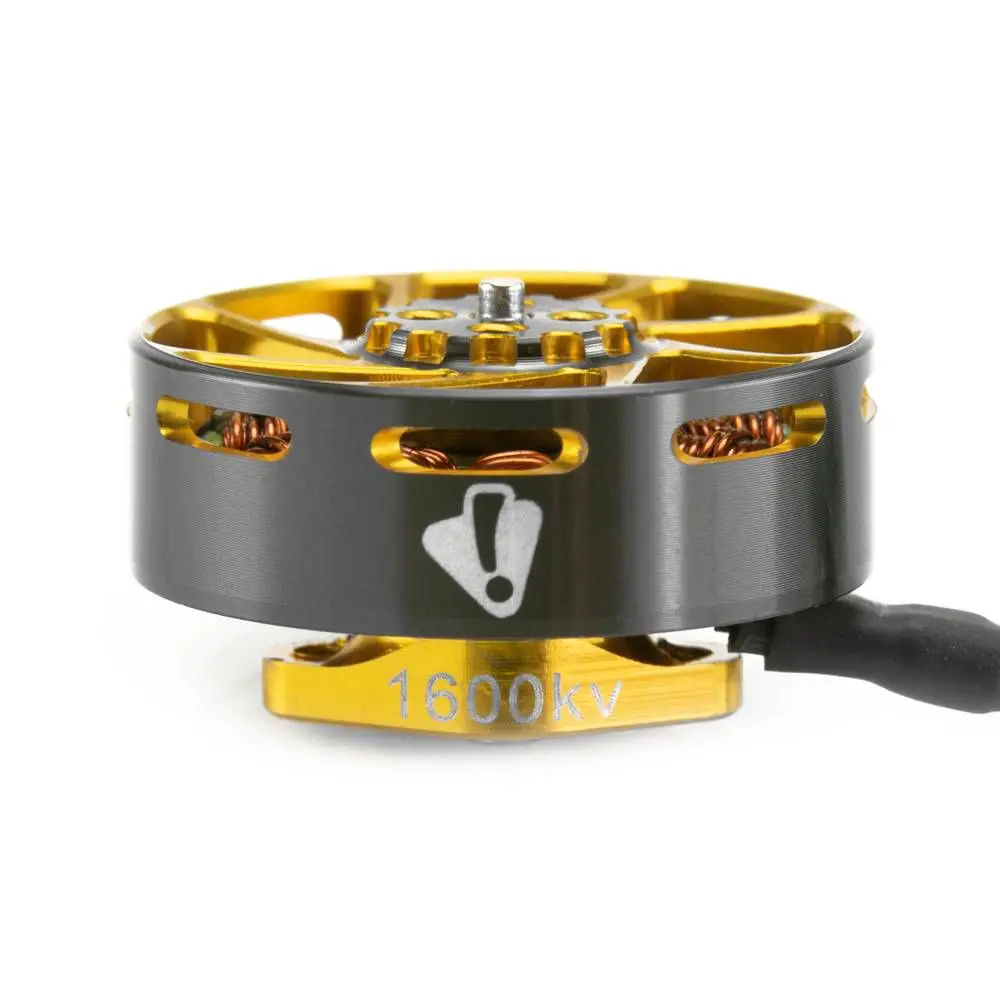
The Ummagawd Aerolite 2004 isn’t just another motor; it’s a testament to the relentless pursuit of performance in the featherweight FPV category. Designed with sub-250g builds in mind, these motors pack a punch while maintaining a remarkably low weight.
If you’re flying a heavier drone or using larger propellers though, you might need to look elsewhere for more power.
T-Motor MCK – Racing Powerhouse Co-designed with a Champion
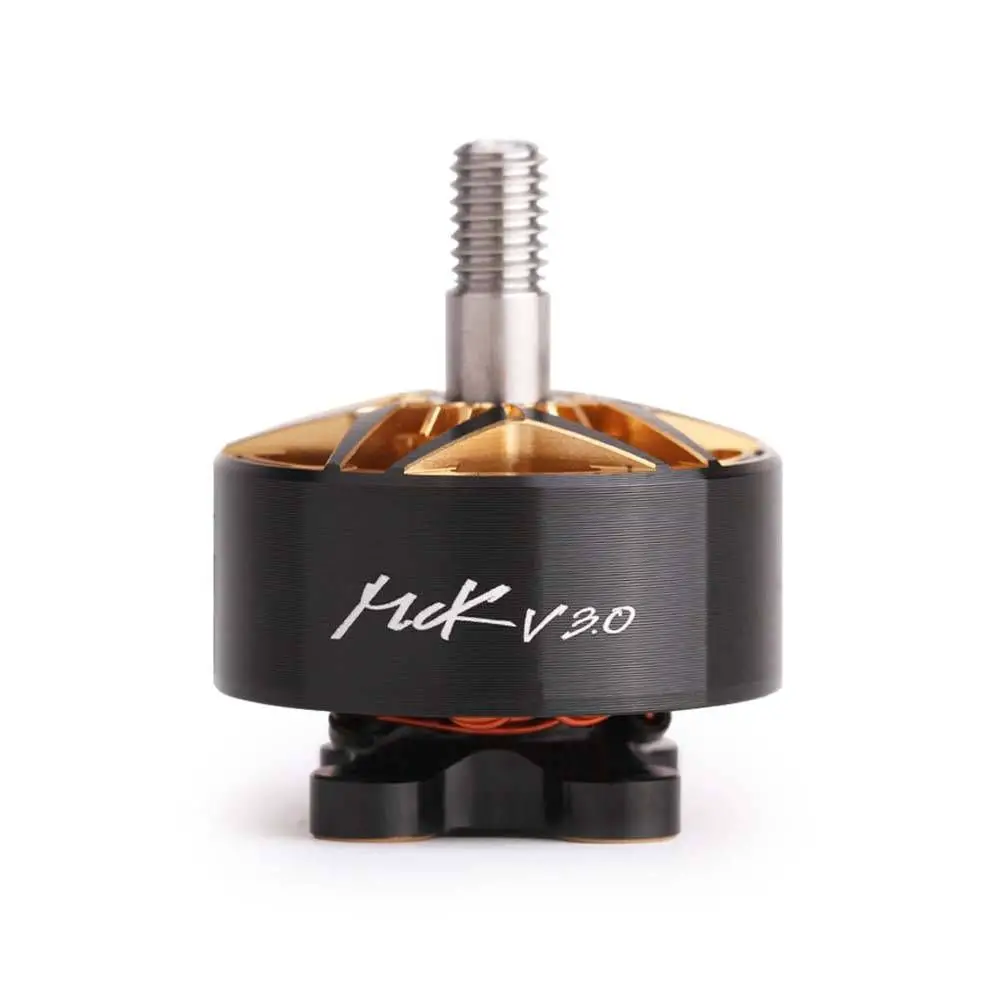
The T-Motor MCK is not just another motor – it’s the result of a collaboration between T-Motor and world-renowned FPV racing pilot MinChan Kim. This motor is engineered for speed, precision, and the demanding conditions of competitive racing.
With input from MinChan Kim, the MCK 2207.5 is tuned for the needs of elite racers. It excels in high-speed tracks and demanding maneuvers, delivering the responsiveness and power required to stay ahead of the competition. These motors provide ample power for aggressive flying while maintaining control and predictability.
Having said that, T-Motor MCK comes with a premium price tag, reflecting its high-end components and racing-oriented design. It might not be the most budget-friendly option for casual flyers. If you’re looking for a more versatile motor for freestyle or cinematic flying, there are options better suited to your needs.
T-Motor F1404 – Versatile Micro Motor for Range and Agility
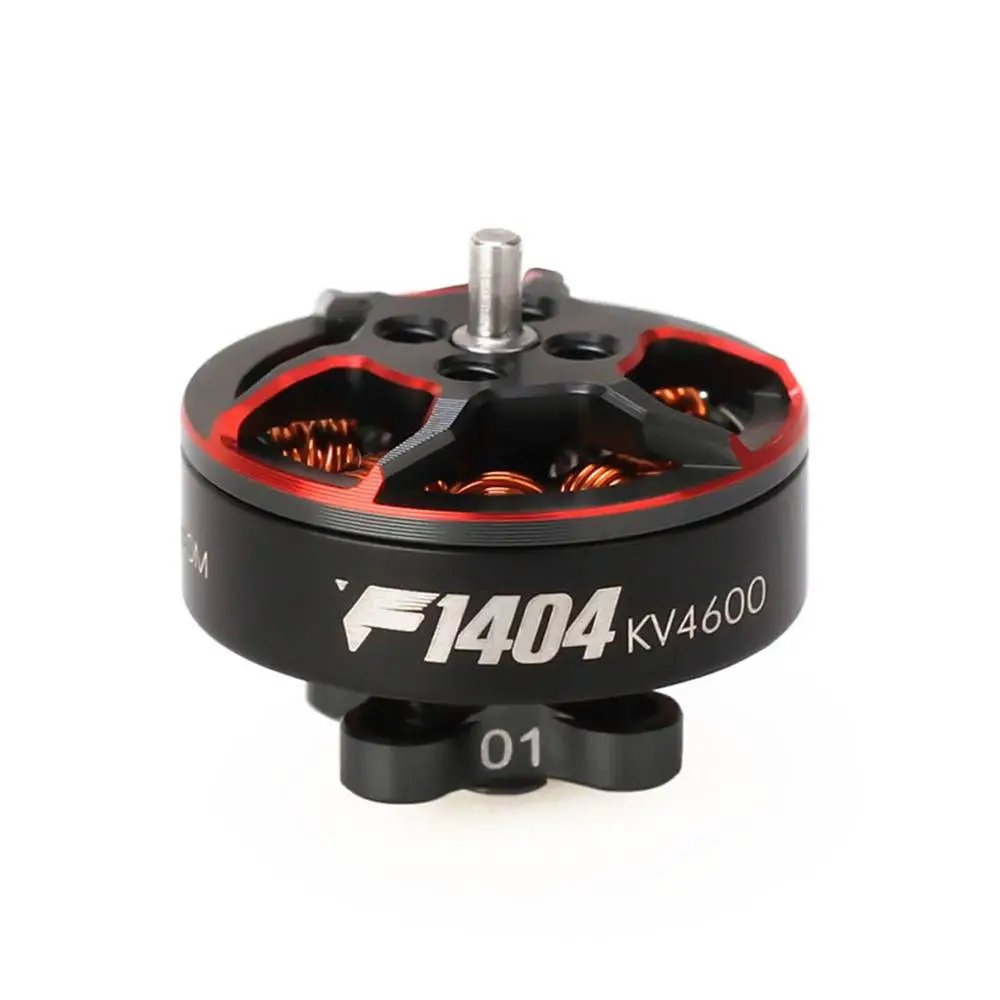
The T-Motor F1404 series has quickly become a favorite among pilots seeking a balance of power, efficiency, and lightweight design in the micro motor category. These motors, available in 2900KV, 3800KV, and 4600KV options, cater to a wide range of FPV builds, from long-range cruisers to nimble cinewhoops.
The F1404s strike an impressive balance between efficiency and power. They deliver punchy performance for freestyle moves while still offering decent flight times for longer flights.
How to Choose FPV Motors for Your Drone?
With so many products out there, what you need are motors that fit your needs. Expensive motors may not be the right one for your drone, and the cheaper motors are not necessarily bad. So what do you choose motors for your drone?
You want motors that produce thrust at least 10 times the drone weight. Smaller drones need big KV motors with small stator, while bigger drones need small KV motors with big stator. High thrust is crucial for speed, while high torque increases acceleration. Use efficient motors to prolong flight time.
Let’s dive into the features that you need to examine when buying the most suitable motors for your drone.
Know the Size of Your Drone

To begin the selection process, you need to know the size and weight of your drone. This is easy if you are just replacing the motors of an existing drone. But if you want to build a new drone, it will take more calculations.
You might ask, how do I know the weight of my drone if I haven’t even chosen the parts? Well, you just need a “guesstimation” or “aspiration”, which forms the basis for you to select your parts. It doesn’t need to be accurate, but it should at least give you a direction.
Remember, the estimated weight should include the battery, the motor itself, and everything else on your drone including the wiring! It is better to overestimate than underestimate the weight.
A drone with a small frame might not fit a large motor. Conversely, you don’t want to use a small motor to power up a big drone because it might not produce enough thrust to fly your drone.
Minimum Thrust Required
After determining the size and weight of your drone, you should next determine how much thrust is required to fly your drone fast enough to win races.
For every pound your drone weighs, the motors should produce at least a total of 10 lbs in thrust. Since you have 4 motors, that will mean 2.5 lbs per motor. The higher the thrust to weight ratio, the better it is, at least for racing.
The downside of a high thrust to weight ratio is that it can be tough to control because your drone will move with a high speed even with the slightest throttle. But you will get used to it.
On top of that, higher thrust could also mean higher current draw. You will need to make sure your batteries’ C rating is high enough to support the current draw and capacity to fly long enough for your races.
So the next question is, how would I know how much thrust a motor produces? Some manufacturers do publish such data in their website or product description.
You can also visit miniquadtestbench.com and find out! This website publishes thrust test results of motors and props combinations. That will save you a lot of time doing your own research.
Motor Size Selection
A brushless motor has a part called the “stator,” and this is the part that is referred to by the size classification of brushless motors, usually indicated as a 4-digit number, XXYY. XX, or the first two digits, refers to the diameter or width of the stator, and YY, or the last two digits, refers to the height of the stator.
The general rule for the size selection is if it has a taller stator, your drone will have greater power even at higher rotations per minute (RPM), aka max speed. On top of that, the motor becomes more responsive.
A wider stator will produce more torque at a lower RPM. Torque is essentially the factor that determines how fast your drone will reach your desired speed, aka acceleration – making it a factor that is crucial for precision and easier turning.
On top of that, wider stators dissipate heat faster due to larger surface area. This allows the motor to perform consistently without overheating. It is also more efficient, smoother, and lasts longer. However, wider stators are less responsive and less powerful.
Having said that, you shouldn’t always go for the biggest motor. As mentioned earlier, the size of frame and props play a role in deciding the size of your motor.
KV Selection

So, what exactly is a motor KV rating? Why is it important to look at motor KV when selecting motors for your drone?
KV in drone motors stands for velocity constant. It tells you roughly how fast (in RPM, revolution per minutes) the motor runs per volt when it is unloaded (without props). For instance, a motor with a KV of 2100 supplied with 4.2V runs roughly at 4.2 x 2100 = 8820 rpm.
Do know that the KV value does not tell you the efficiency, power, or even current capacity of the motor. In fact, you don’t even need to know how fast your motor can theoretically spin in order to build your own drone!
In a nutshell, high KV means higher speed but lower torque.
Higher speed is not necessarily good. Beginners may have issues adapting to the speed from high KV motors. Don’t chase after high KV motors if you are still new in this hobby.
On the other hand, lower torque is bad. This means the motors need to draw more current to start rotating the props. If you put a big prop on a high KV motor, it struggles even more to rotate the props. This causes overloading, which leads to overheating, and ultimately motor damage.
Due to that reason, lower KV motors are usually paired with larger drones (with larger props), while higher KV motors are utilized for smaller drones.
Battery voltage can also affect your decision on motor KV. 4S drones use higher KV motors to achieve the desired speed. On the other hand, the 6S equivalent uses lower KV motors to improve the torque, achieving the same speed.
The table below shows the recommended combination of frame size, prop size, stator size and KV. This is merely a recommendation and it is not casted into stone.
| Frame size | Props size | Stator Size | KV |
|---|---|---|---|
| ≤ 150 mm | 3″ | ≤ 1306 | 3000-4000 |
| 180 mm | 4″ | 1806 | 2600-3000 |
| 210 mm | 5″ | 2204-2208, 2305-2306 | 2300-2600 |
| 250 mm | 6″ | 2204-2208 | 2000-2300 |
| 350 mm | 7″ | 2206-2212 | 1500-1700 |
| ≥ 450 mm | ≥ 8″ | ≥ 2212 | ≤ 1200 |
Once you have shortlisted the potential motors based on thrust generated, size and KV, you can look into other factors like weight, motor efficiency, and torque to select the best motor that suits you.
That’s all you need to know about motor KV for FPV drones. But if you are curious and want to dig further, check out this post.
Weight of Motor
Obviously, FPV motors come with weight. The 4 motors make up quite a substantial proportion of the drone’s weight. In fact, it is the heaviest part besides the battery. Hence, getting a lightweight motor can improve the overall speed of your drone.
Because the motors are located at the edges of the frame, changing the flight direction when turning requires additional force to offset the existing momentum. Heavier motors mean higher momentum.
Since a lighter motor results in lower momentum, less force is required to change the movement, resulting in faster acceleration and deceleration. In races, it makes your drone turn faster and exit a corner quicker. However, it is not as durable to crash as a heavier motor.
Motor Efficiency
Motor efficiency basically measures how much thrust a motor generates per watt or amp at different throttles. The higher the value, the more efficient the motor.
Certain motors are more efficient at medium throttle while some are more efficient at full throttle. When you are looking into this stat, you should consider your play style so that you choose one that fits your play style.
But why does it matter? A highly efficient motor makes the most out of your battery in terms of both flight times and battery life. Essentially you can fly longer and don’t need to buy new batteries as often.
Torque
A motor with a wider stator has higher low end torque, which makes it accelerate faster and hence respond faster when changing directions. Traditionally, drone racers often look at the stator size when choosing FPV motors so that they can get those with the highest torque.
However, with the advancement of technology, stator width is no longer the major factor that affects the torque.
Things like N54 magnets, curved magnets, thinner stator lamination, better flux ring design and tighter clearance between magnet and stator allow generation of high torque even by smaller stators. FPV motors with those designs should be prioritized.
Final Words
Choosing the right motor for your racing drone is no easy task. Various factors need to be examined, and all of them would require days of research and decision-making to polish.
Nevertheless, it is never impossible to do, and knowing how each part works is essentially the core step in making sure that everything works efficiently, correctly, and appropriately based on your needs.
Additional Information
What is POPO system?
POPO system is an innovation that allows pilots to put on and remove their props from the motors without using a wrench. Originally developed by Lumenier, the POPO system might become an industry standard.
While you need to use POPO-compatible props on motors with POPO to enjoy this feature, non-POPO props can be mounted on POPO motors without issue.

